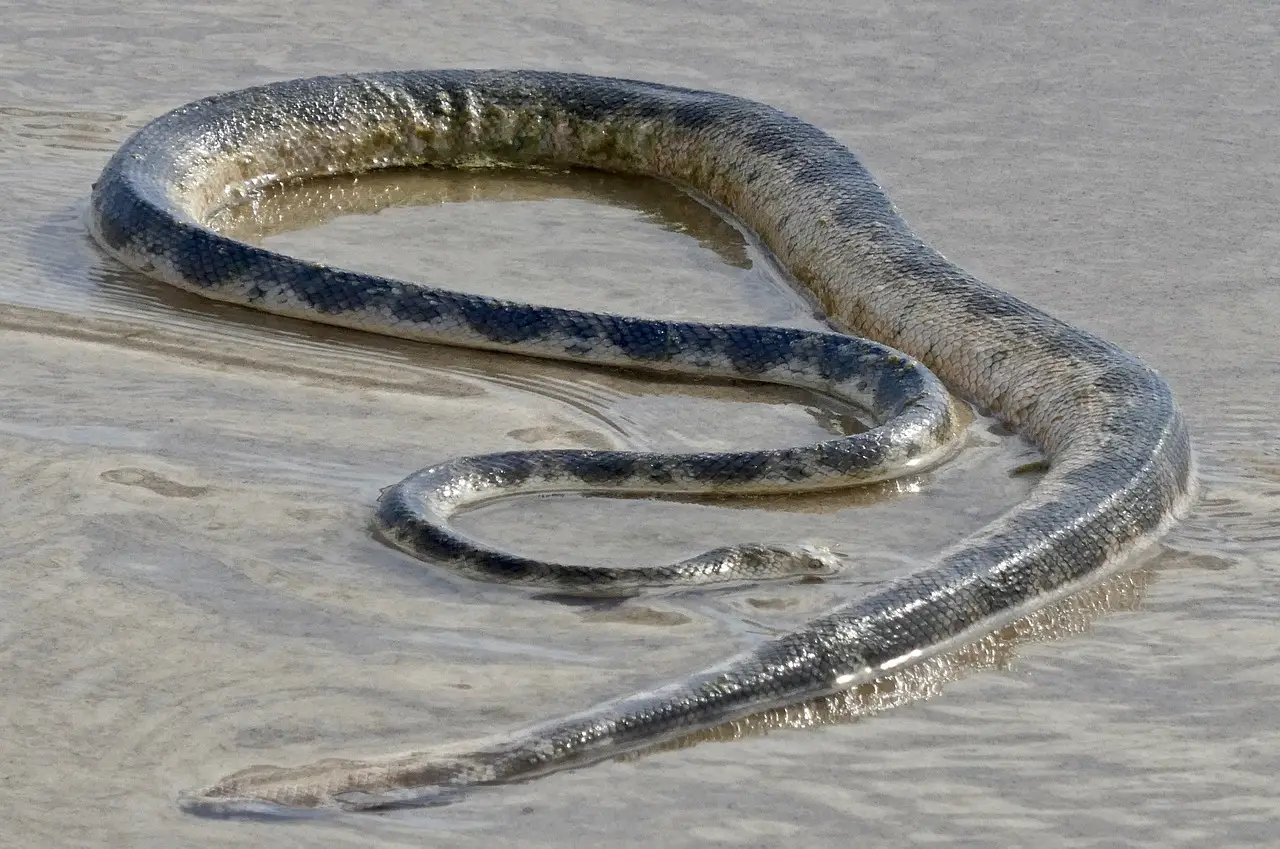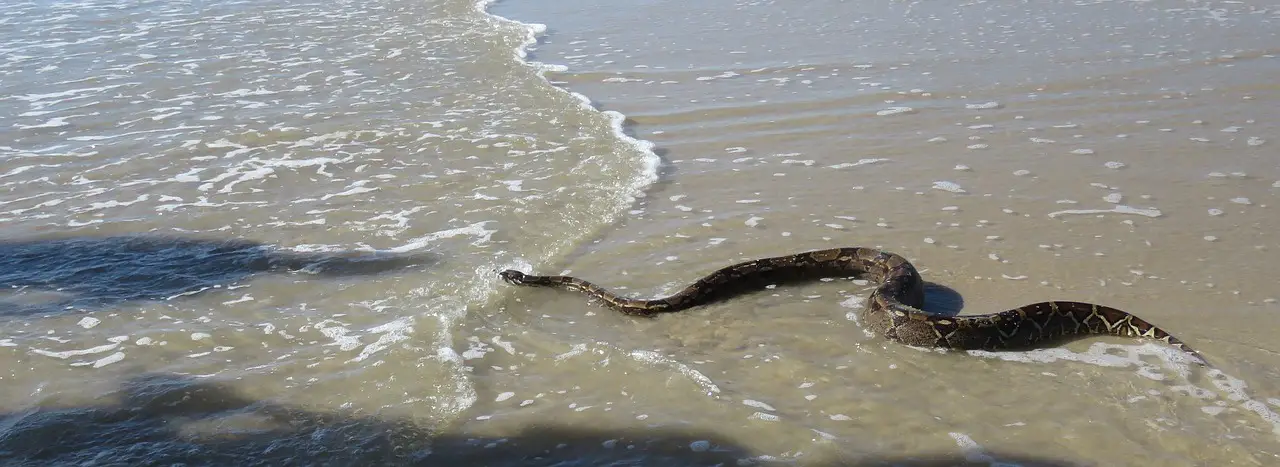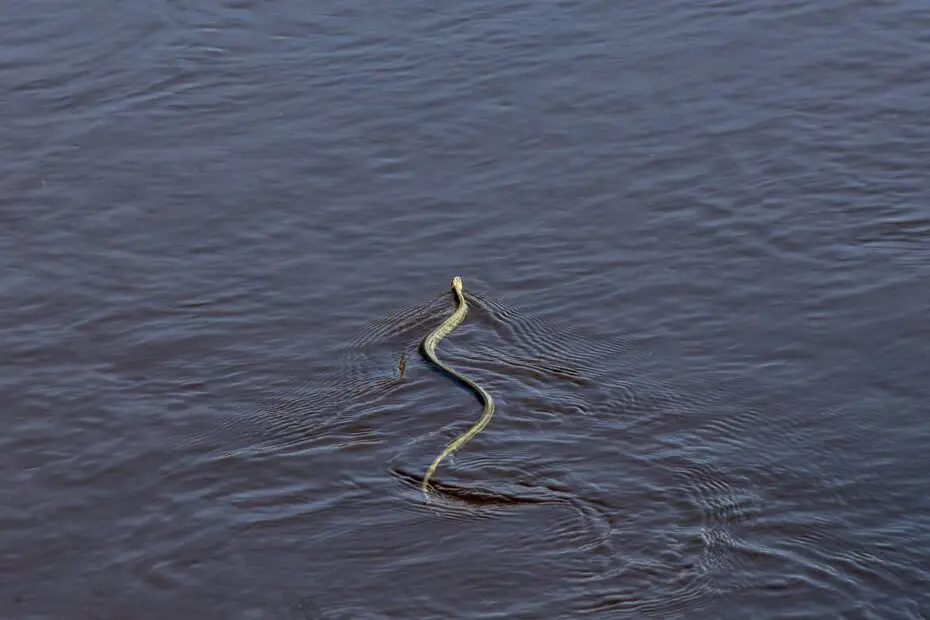The world beneath the ocean’s surface is filled with an array of fascinating and mysterious creatures. Among them, ocean snakes, also known as sea snakes, hold a captivating presence. With their sleek bodies and remarkable adaptations, these serpentine creatures have carved out a unique niche in the marine ecosystem. In this article, we will dive deep into the world of ocean snakes, exploring their characteristics, habitat, adaptations, and interactions with humans.
You may also want to read about the top 10 deadliest snakes.
Introduction
Ocean snakes, scientifically known as Hydrophiinae, are a subfamily of venomous snakes that have adapted to life in the water. Unlike their terrestrial counterparts, they have evolved several remarkable features that enable them to thrive in the marine environment. Let’s unravel the secrets of these ocean-dwelling serpents.

Types of Ocean Snakes
Sea Snakes
Sea snakes are the most well-known and diverse group of ocean snakes. They are predominantly found in the warm tropical waters of the Pacific and Indian Oceans. Sea snakes have flattened tails, allowing them to swim with great agility, and their bodies are covered in scales that reduce friction in the water. These venomous snakes primarily feed on fish and other marine creatures, using their potent venom to immobilize their prey.
Sea Kraits
Sea kraits are another fascinating group of ocean snakes that inhabit coastal waters and coral reefs. While they share some similarities with sea snakes, they differ in their behavior and physical characteristics. Sea kraits have paddle-like tails and are more adapted for life on land, often venturing onto sandy beaches for nesting purposes. Unlike sea snakes, they possess venomous glands located in the posterior part of their jaws.
Distribution and Habitat
Ocean snakes can be found in various regions across the globe, with the highest diversity observed in the tropical waters of Southeast Asia and Australia. They have a particular affinity for specific habitats, such as coral reefs, mangroves, and shallow coastal waters. These environments provide them with abundant food sources and shelter, allowing them to thrive.
Life Cycle and Reproduction
Breeding in ocean snakes usually takes place during the warmer months when the water temperature is favorable. Male snakes engage in courtship rituals, competing for the attention of females. Once mating occurs, female ocean snakes retain the eggs inside their bodies until they give live birth to fully-formed, independent offspring. Some species of sea snakes exhibit remarkable maternal care, protecting their young until they are capable of surviving on their own.

Diet and Feeding Habits
Ocean snakes have adapted to a diet consisting primarily of fish and occasionally cephalopods. They possess sharp teeth designed for gripping and holding onto slippery prey. When hunting, they rely on their excellent eyesight and the ability to sense vibrations in the water. With swift movements, they capture their prey and use their venom to subdue it. Ocean snakes play a crucial role in maintaining the balance of the marine food chain by controlling the population of their prey.
Adaptations for Life in the Ocean
Ocean snakes have undergone remarkable adaptations that allow them to thrive in their watery realm. Their physical characteristics and behaviors are finely tuned to meet the challenges of an aquatic lifestyle.
Physical adaptations include streamlined bodies and flattened tails that facilitate efficient swimming. The scales of ocean snakes are smooth and reduce drag, enabling them to glide effortlessly through the water. They have developed specialized scales that provide resistance against the corrosive effects of saltwater. Additionally, these serpents possess a unique respiratory system that allows them to extract oxygen from the air, even when submerged.
Behavioral adaptations of ocean snakes include the ability to hold their breath for prolonged periods. This adaptation enables them to stay submerged and search for prey without the need for frequent resurfacing. They also possess remarkable navigational abilities, utilizing various environmental cues such as currents, temperature gradients, and Earth’s magnetic field to navigate through vast expanses of the ocean.
Interactions with Humans
While ocean snakes generally avoid human contact, incidents of snakebites can occur when humans unknowingly encounter them. The venom of sea snakes is highly potent and can be potentially lethal. However, bites are relatively rare, as these snakes are typically not aggressive towards humans unless threatened or cornered. It is essential to exercise caution when swimming or diving in areas where sea snakes are known to inhabit.
Conservation efforts are crucial to ensure the long-term survival of ocean snakes. Habitat destruction, pollution, and accidental capture in fishing nets pose significant threats to their populations. Implementing protective measures, such as marine reserves and sustainable fishing practices, can contribute to their conservation.
Fascinating Facts about Ocean Snakes
- Longest venomous snake in the world: The sea snake known as the “long-nosed sea snake” (Hydrophis schistosus) holds the record for being the longest venomous snake, reaching lengths of up to 3 meters (10 feet).
- Unique coloration and patterns: Ocean snakes exhibit a stunning array of colors and patterns. Some species display vibrant yellow, green, or black bands, providing camouflage among the coral reefs and seagrass beds.
- Myth and folklore surrounding ocean snakes: Throughout history, ocean snakes have captivated human imagination. They are often featured in folklore and tales of the sea, symbolizing both danger and enchantment.
Conclusion
Ocean snakes, with their remarkable adaptations and enigmatic presence, add to the rich tapestry of marine life. Their streamlined bodies, venomous nature, and ability to thrive in the vastness of the ocean make them truly fascinating creatures. By understanding and appreciating these serpents, we can contribute to their conservation and ensure their continued existence for generations to come.
FAQs
- Are all ocean snakes venomous? Not all ocean snakes are venomous. While most sea snakes possess venom glands and are venomous, some sea kraits are mildly venomous or non-venomous.
- Can ocean snakes survive on land? Although ocean snakes are adapted to life in the water, some species, like sea kraits, can venture onto land for nesting purposes but cannot survive indefinitely outside their aquatic habitats.
- How do ocean snakes find their prey in the vast ocean? Ocean snakes rely on their excellent eyesight and the ability to sense vibrations in the water to locate and capture their prey. They are adept hunters and can detect even subtle movements.
- Do ocean snakes have any natural predators? Adult ocean snakes have few natural predators due to their venomous nature. However, young snakes may be preyed upon by larger fish, sharks, and predatory seabirds.
- What should I do if I encounter an ocean snake while swimming? If you encounter an ocean snake while swimming, it is best to maintain a safe distance and avoid any sudden movements. Remember that sea snakes are generally not aggressive unless provoked. Retreat slowly and allow the snake to swim away.
